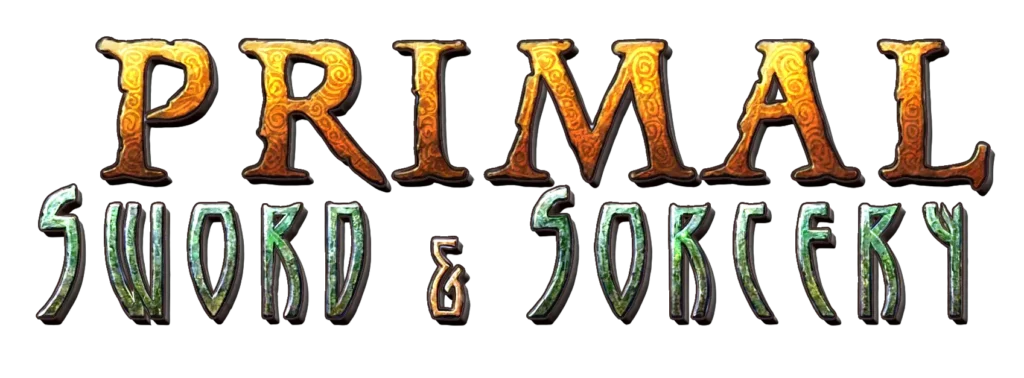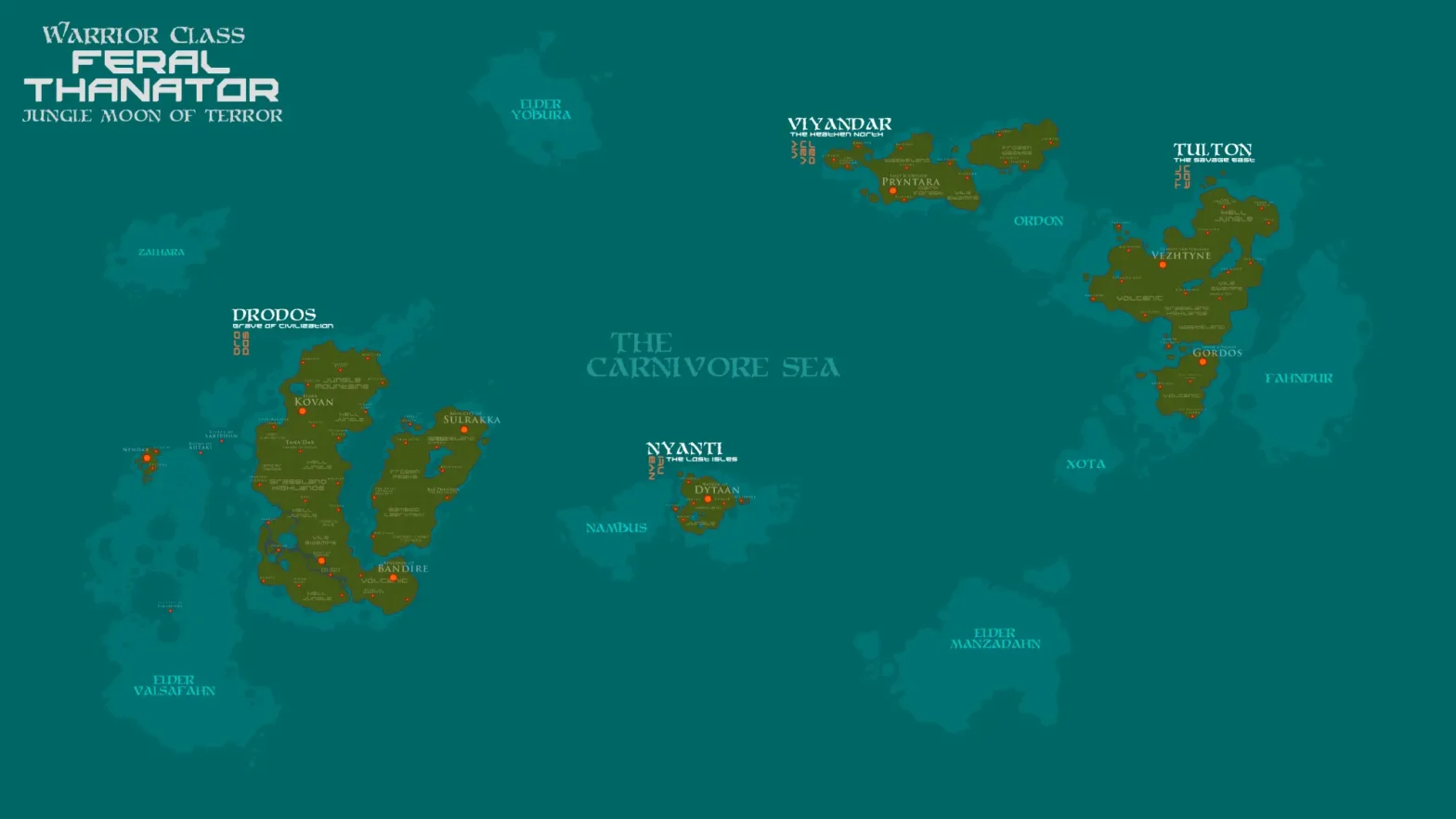
The Height of Civilization
Of the first and second ages before the Cataclysm, nothing certain is known.
What remains are fragments: whispers of empires so vast they reached between worlds, whose towers rose like frozen lightning from the jungle, whose bridges spanned not miles but continents.

They crossed oceans on wings of crystal and filled the skies with ships that pierced the void between moons. They drew unbounded power from the hearts of suns; they wove bloodlines as masons weave stone, sculpting beasts and kin alike into forms of purpose and vanity. Theirs was the very pinnacle of civilization — an age when artifice eclipsed nature, when even flesh and time bent to command.
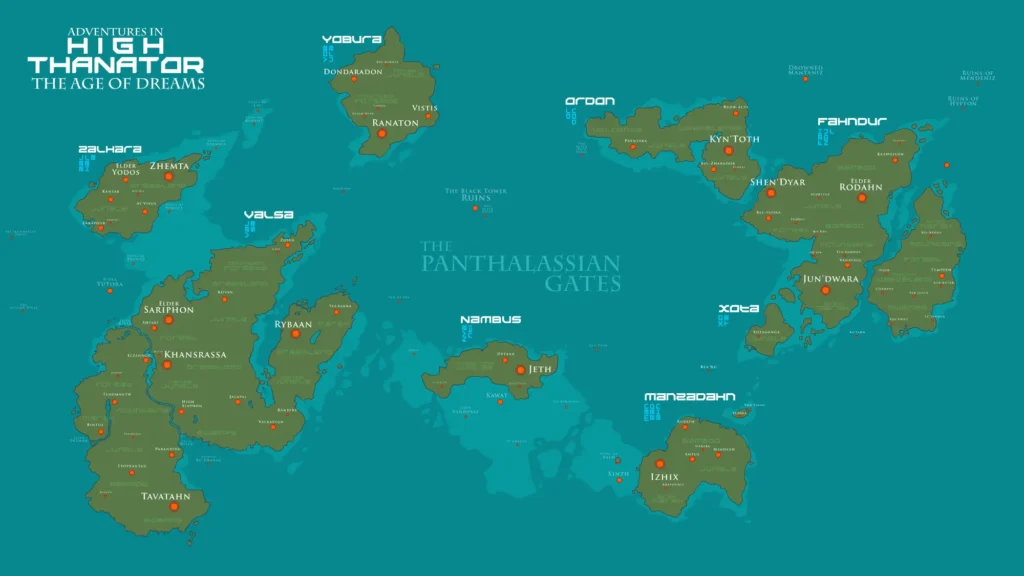
Yet for all its might, it was warlike, cruel, and restless. Titans clashed not only with steel but with continents as weapons; armies of sculpted hosts and machines drowned the jungles in campaigns whose purposes are lost.
The Triumvirate of Valsa, Zalhara, and Yobura made war upon Ordon, Fahndur, and Xota, while Nambus and Manzadahn played both sides to their ruin. Those who conquered enslaved the fallen; those who enslaved grew fat and sotted, birthing weak offspring doomed to become chattel of distant empires.
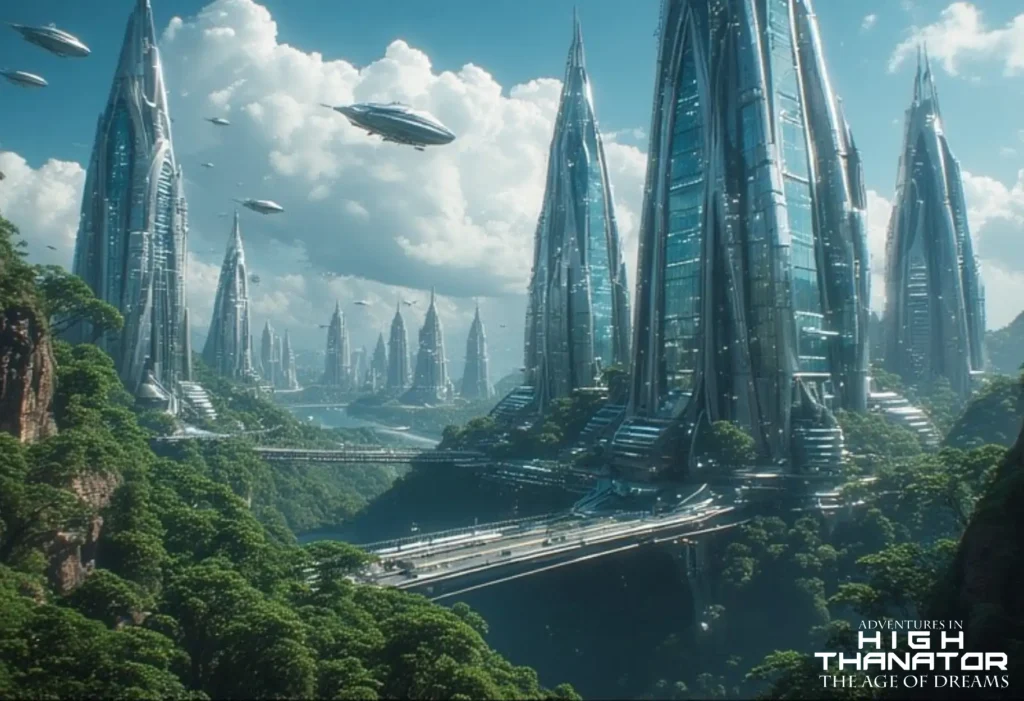
Thus civilization and its madness rolled on — vast, monotonous, inexorable. The Cataclysm By this time the nations of the world had grown stagnant. Kings quarreled like children over dust and ashes, while their people starved in famine and bled in endless border wars. From palace to hovel the realms sank into weariness, uprisings breaking like sparks from the slow grind of a history gone stale. No vision stirred, no glory endured—only the dull ache of decline.
Then the Cataclysm struck, rending the civilizations of Thanator asunder.
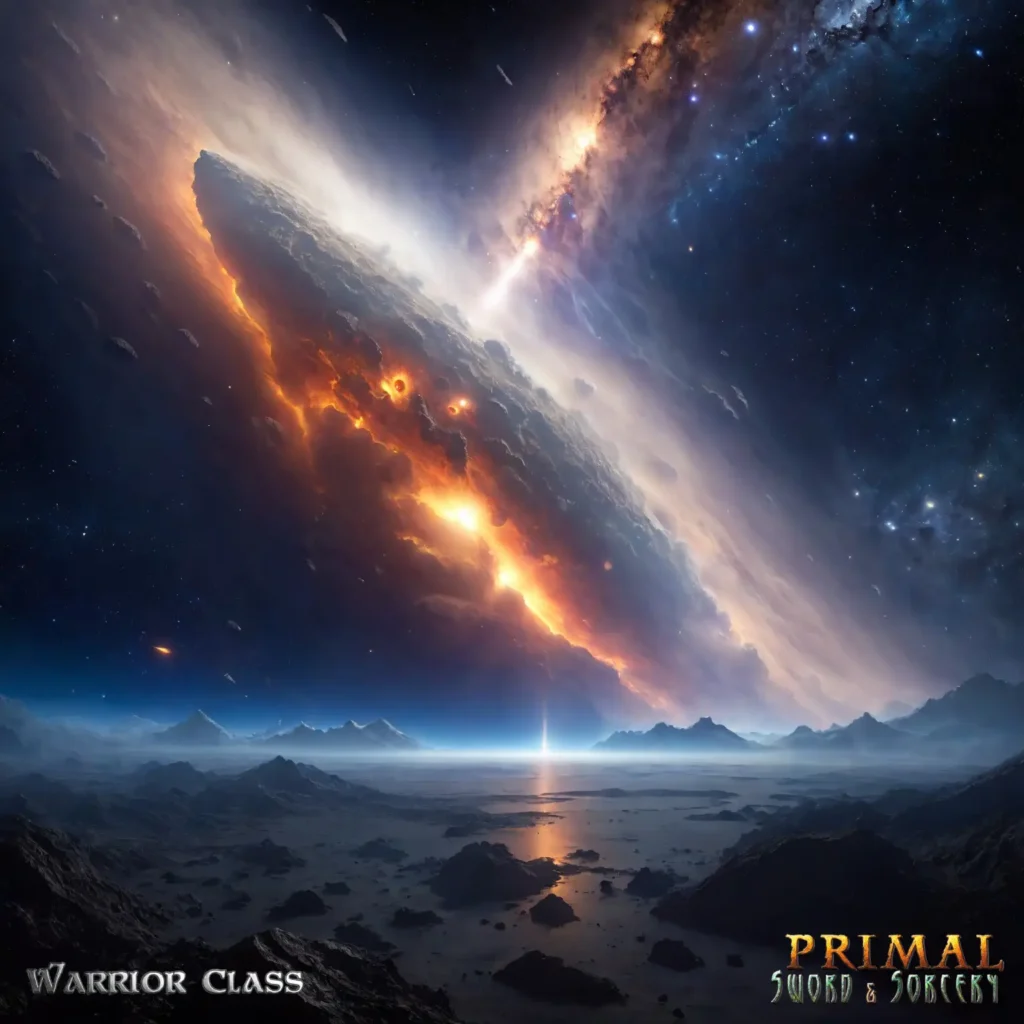
The crystal towers of High Thanator shattered like glass beneath a hammer, seas boiled, and the skies convulsed in violent upheaval none could withstand. The last embers of that golden age drowned in fire and fell to ash, and from its ruin began the long night of dread. The Age of Dread It is known that before the unyielding feral terror, before the mists of horror yet to come, there was an Age of Ruin and Rage.
From the wreckage of High Thanator’s crystal towers and jeweled decadence crawled forth the warlords of Dread Thanator—men and beasts clad in iron and smoke, lords of a world shattered, where the sword was the only law and blood the only coin. The planet itself was broken, scarred with ruin, its once-proud civilizations ground beneath cataclysm. Behind the veil of myth it may be seen as an era of Dread & untethered Madness, a time when the land was scoured but not yet dead, when the people clawed back scraps of order with desperate ferocity.
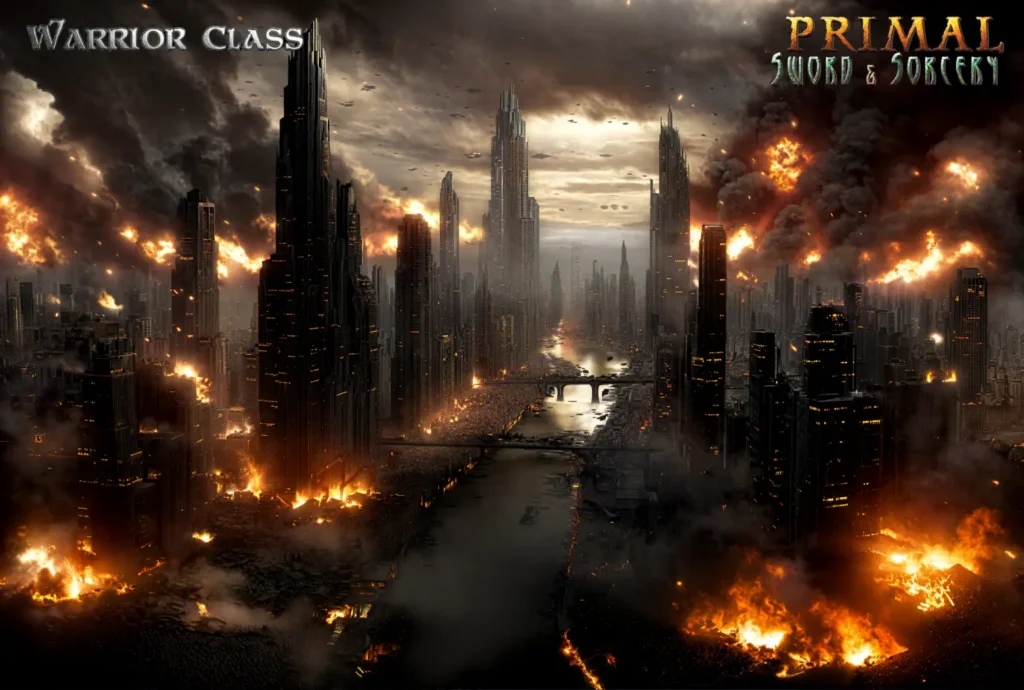
Tech still smoldered in the husks of elder cities, and the will to reclaim the heights of civilization still burned in scattered tribes and kingdoms. But they were not united. Warlord rose against warlord, bloodline against bloodline, feud against feud. The dream of recovery was smothered beneath vendettas older than memory, and the iron strength that might have rebuilt the world was squandered in endless slaughter. In those struggles the last relics of the elder world—the weapons that had once commanded the heavens and leveled continents—were drawn forth again.
And when they were unleashed, Thanator was plunged into devastation anew, a firestorm that burned the last bridges to the age before. From that ruin came the long descent, and from that descent the dread gates opened to The Age of Terror.
And so, Deep within the mists of an ancient and feral age, long after the primal dread had passed and the ruinous cataclysm had broken the elder stars, the Moon of Thanator was shrouded in terror. Savage tribes stalked the vine-choked ruins, monstrous beasts prowled the swamps of unending decay, and the bones of forgotten empires sank beneath strangling jungle. There, amidst carrion thrones and temples drowned in mire, life clung by fang and blade alone. It was the Age of Ruin, where the strong rutted and slew, and the weak were devoured by the dark. Yet fragments of the elder order endured.
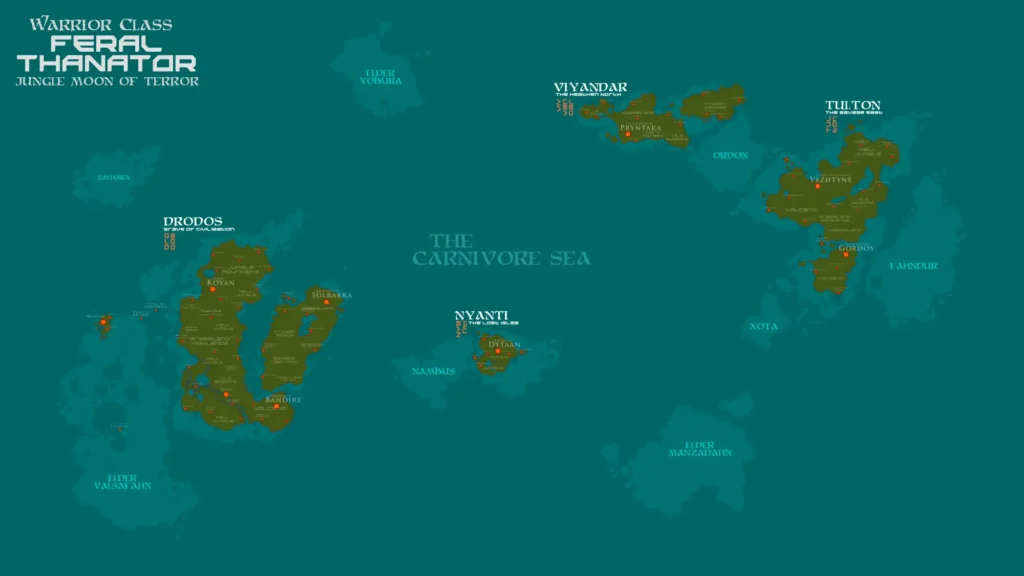
Seven cities of the Elder Kind still brooded over the continents and the shattered isles, born in ages before memory forgotten and myth most antique. They rose as mountains of stone and metal, deified by generations who knelt before their gates as though before the artifice of unknown gods. Kovan, Sulrakka, and Bandire rotted upon the accursed rock of Drodos; Dytaan drowned in the mists of forgotten Nyanti; Vezhtyne and Gorodos towered upon the barbarous marches of Tulton; and far to the heathen north squatted grim Pryntara, half entombed in ice.
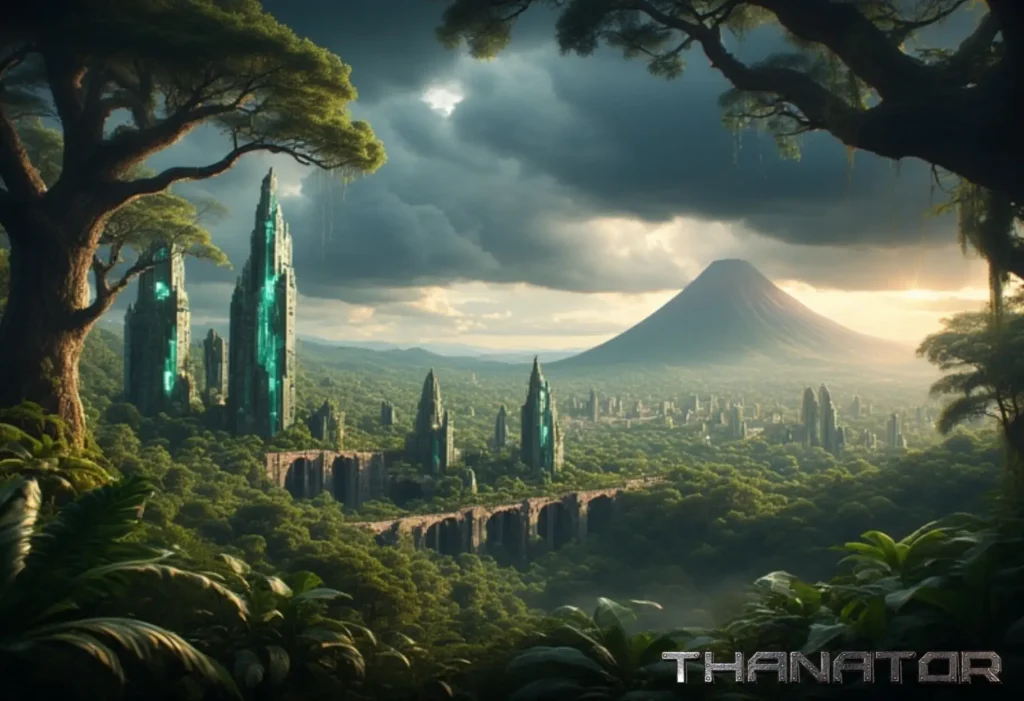
They were mighty in aspect, terrible in memory—but they were not salvation. Each was a prison, clutched by kings and warlords alike who wore crowns of iron and despair, ruling gloomy dominions from halls that had once served as gateways to the stars. None recalled their true design, nor dared to name the vanished architects who had raised them.
Between those titan relics sprawled a world unmastered. Tribes of beast-folk warred in endless vendetta, wolf against lion, stag against boar, panther against all.
The jungle was an enemy unto itself, strangling, choking, feeding carrion to the rivers and the swamps. From its depths crawled horrors with scale and fang, older than any city, older than the cataclysm. Even the tribes who raided and rutted by torchlight knew themselves hunted.
And all were prisoners of the sea. The oceans of Thanator beat against every shore with a hunger as endless as time, swallowing coasts, birthing storms, cutting one people from another with leagues of black water. Islands rose and sank in a single lifetime, and those who dared the waves found only shipwreck, madness, or the waiting teeth of abyssal leviathans.
So it was that Thanator lingered in twilight: a world of ruins where the past would not die, and of jungles where tomorrow might never dawn. From the gloom of her seven cities and the blood-soaked thickets of her tribes, the moon waited for the tread of heroes and tyrants alike—for in the Age of Ruin, all thrones were carved in bone, and all crowns were stained with blood.
